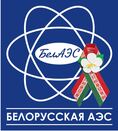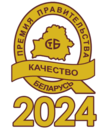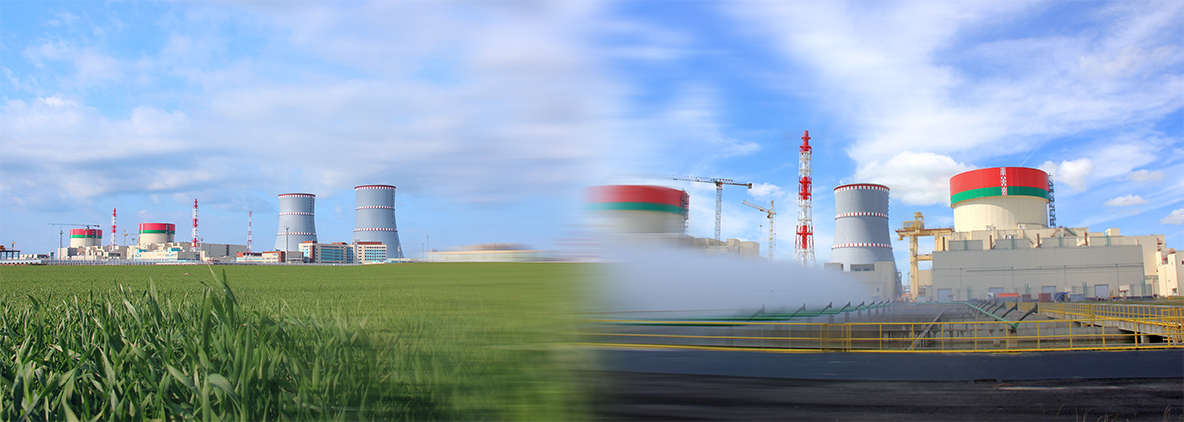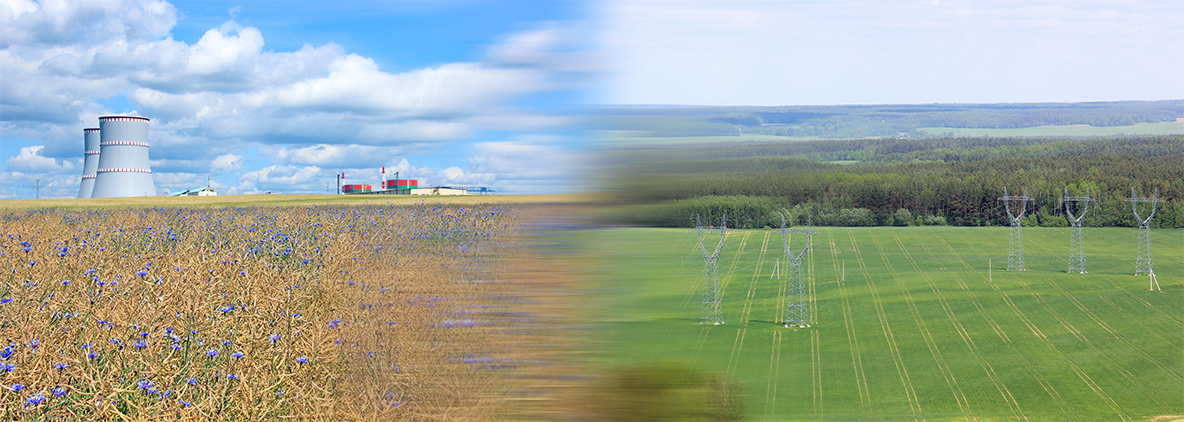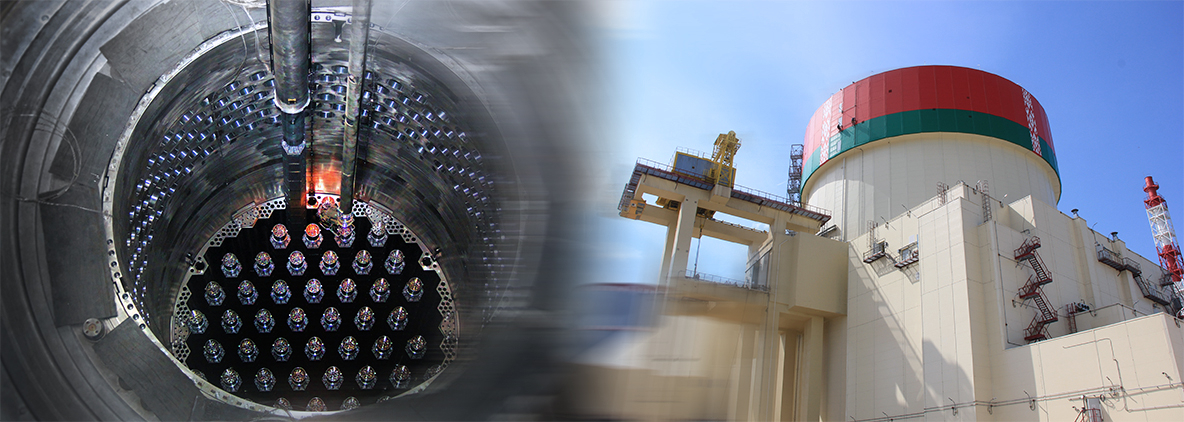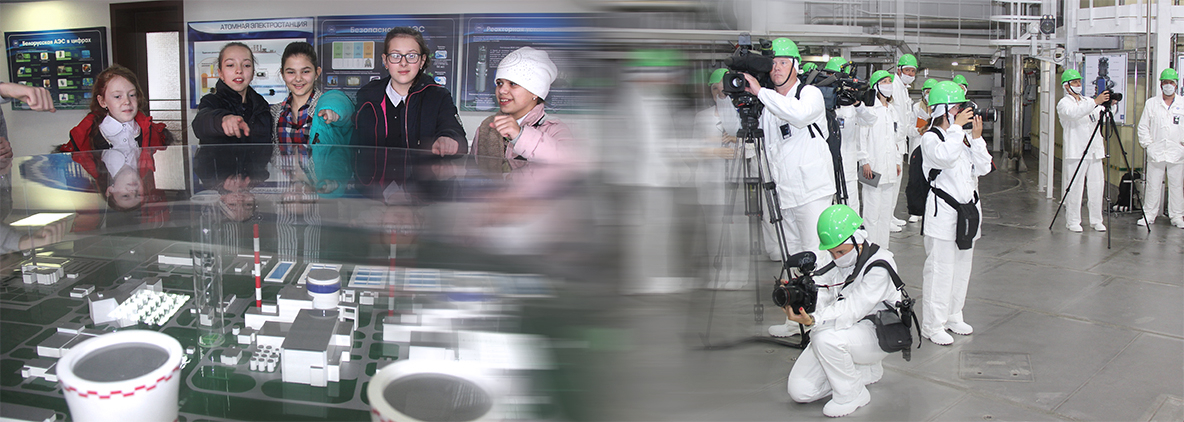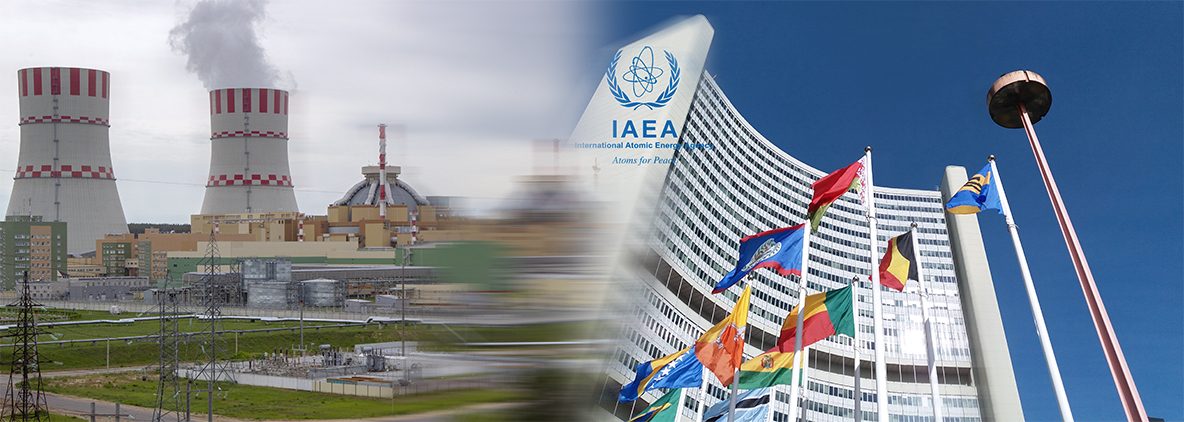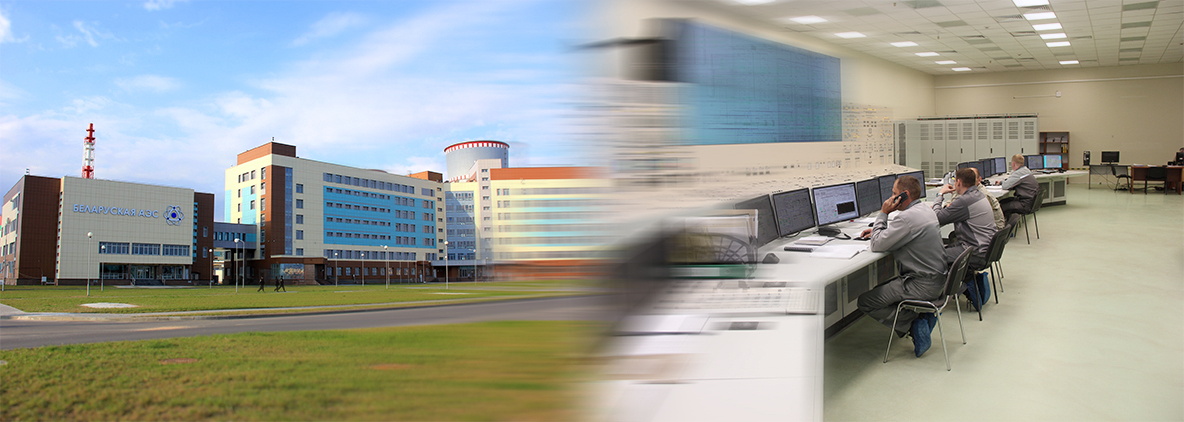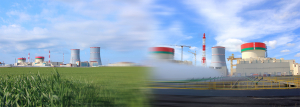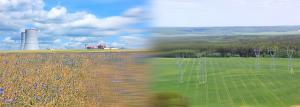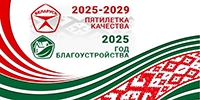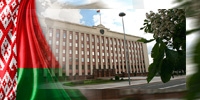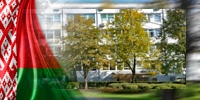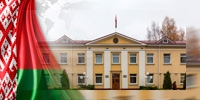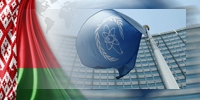Address:
Administrative and laboratory building (00UYA)
Vornyany village council, 2/7
Ostrovets district, Grodno region, Republic of Belarus 231220
Е-mail: belaes@belaes.by
NPP Information Center: ic@belaes.by

Phones:
Reception: +375 (1591) 4-53-59, fax: +375 (1591) 4-54-00
HR department: +375 (1591) 45-357; +375 (1591) 46-697
Accounts department: +375 (1591) 46-358
NPP Information Center: +375 1591 46 605
Purchases: +375 (1591) 4-67-19, +375 (1591) 4-67-34
Отдел информации и общественных связей
NPP Ecology
Preview report on EIA of Belarusian NPP
Statement on possible environmental impact of Belarusian NPP (page 1)
Final report on EIA of Belarusian NPP
Environmental impact assessment (EIA) of Belarusian NPP has been carried out in accordance with the requirements of environmental regulations and technical normative legal acts being in force in Republic of Belarus, and having taken into account the recommendations of International Atomic Energy Agency (IAEA).
Part 8.2. Current condition of environment
Safety
Belarus honors nuclear safety commitments
Legal foundation
The Republic of Belarus is party to international treaties and conventions, which are related to nuclear and radiation safety, and fulfills the measures they stipulate.
The number includes:
- Joint Convention on the Safety of Spent Fuel Management and on the Safety of Radioactive Waste Management;
- Convention on Nuclear Safety;
- Agreement between the Republic of Belarus and the International Atomic Energy Agency on using safeguards in view of the Nuclear Weapons Non-Proliferation Treaty of 31 August 1995;
- Convention on the Physical Protection of Nuclear Material;
- Convention on Early Notification of a Nuclear Accident and Convention on Assistance in Case of a Nuclear Accident or Radiological Emergency;
- Nuclear Weapons Non-Proliferation Treaty;
- Vienna Convention on Civil Liability for Nuclear Damage;
- Convention on Access to Information, Public Participation in Decision-making and Access to Justice in Environmental Matters;
- Convention on the Environmental Impact Assessment in a Transboundary Context.
Honoring commitments in practice
The Republic of Belarus fully honors its commitments resulting from the abovementioned treaties and conventions. Every month nuclear materials and plants of the Republic of Belarus are inspected together with the IAEA.
National reports on fulfilling the Convention on Nuclear Safety and the Joint Convention on the Safety of Spent Fuel Management and on the Safety of Radioactive Waste Management have been compiled and presented.
Control over the export of fresh and irradiated nuclear fuel of the movable nuclear power plant Pamir 630D to the Russian Federation has been enabled as well as the import of low-enriched nuclear fuel for research apparatus of the state-run United Nuclear and Energy Research Institute Sosny.
Important facts in brief:
Non-proliferation of nuclear weapons is an important task, which requires international cooperation and stronger trust at all levels – the bilateral, regional, and global ones. The Nuclear Weapons Non-Proliferation Treaty of 1968 is one of the instruments used to achieve the goal.
Belarus has been party to the Treaty since 1993. In line with the Treaty as a non-nuclear country Belarus undertakes not to make or purchase nuclear weapons or other explosive nuclear devices. Belarus undertakes not to solicit or accept aid in manufacturing such devices. In line with the Treaty Belarus undertook to sign the agreement with the International Atomic Energy Agency (IAEA) to enable IAEA control over all the nuclear materials and prevent their use for manufacturing explosive nuclear devices.
The agreement between the Republic of Belarus and IAEA on using safeguards in view of the Nuclear Weapons Non-Proliferation Treaty (the agreement on safeguards) came into force in 1995. In line with the agreement Belarus declared the location, characteristics, and the usage of all the nuclear materials and the equipment that uses the materials. Belarus undertook to enable IAEA inspections of all such nuclear materials and equipment.
Since its inception the system of IAEA safeguards has been growing stronger thanks to regular introduction of new methods and ways to raise its effectiveness and functionality. In 1997 the IAEA worked out a supplementary protocol to the agreement on safeguards.
Source: Nuclear and Radiation Safety Department of the Belarusian Emergencies Ministry
The scheme of the power unit and safety systems of the Project NPP-2006 are notable for enhanced safety features and technical and economic indicators and fully complies with international norms and IAEA recommendations.
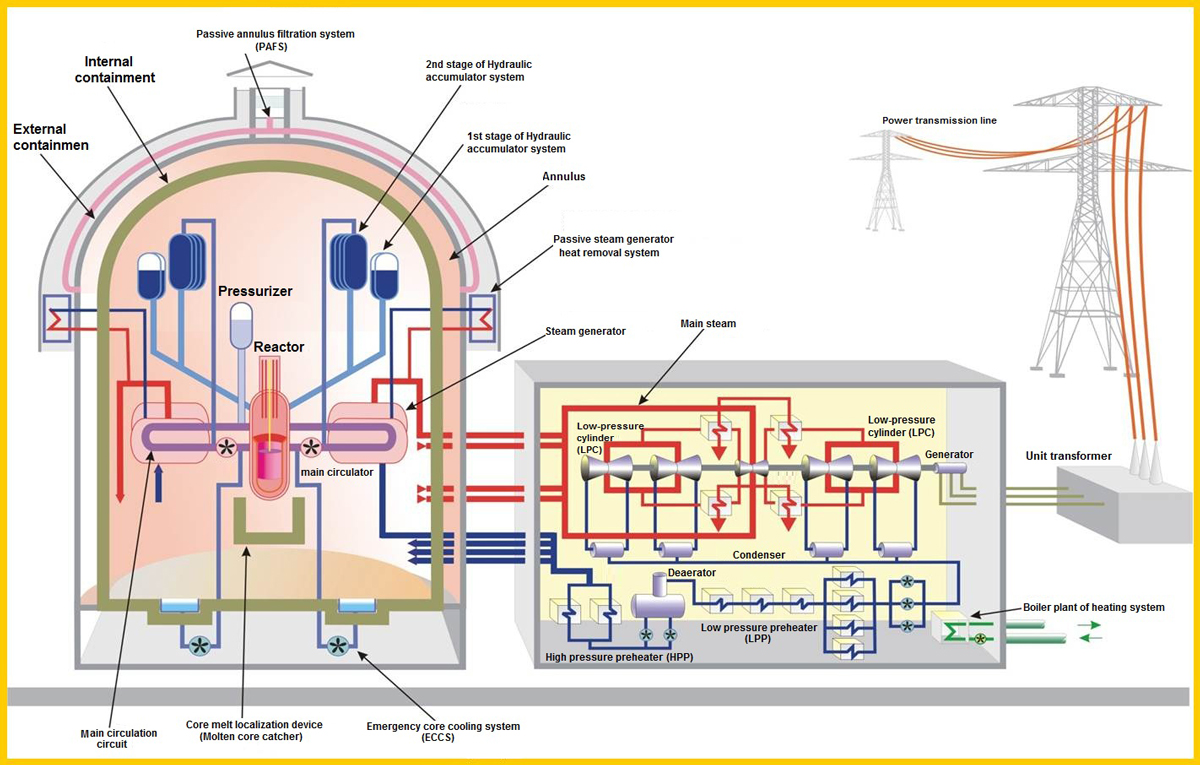
The project uses the latest tools and safety systems: four-channel safety systems (overlapping), melt localization device, double containment of the reactor building, hydrogen removal system, passive heat removal system; protection of the power plant from external influences is provided.
The high degree of safety of the Belarusian nuclear power plant is provided by many factors. The main of them are the principle of self-protection of the reactor system, the presence of several safety barriers and multiple overlapping of safety channels. It should be noted also the use of active (ie, requiring human intervention and the availability of energy sources) and passive (not requiring the intervention of an operator and an energy source) safety systems.
The safety system of modern Russian nuclear power plants consists of four barriers to the spread of ionizing radiation and radioactive substances in the environment. The first is a fuel matrix which prevents the release of the fission products under the fuel cladding. The second is the very fuel cladding, giving no fission products into the coolant to get the main circulation circuit. The third is the main circulation circuit, which prevents the output of the fission products under the protective hermetic shell. Finally, the fourth is a system of protective hermetic covers (containment), excluding the release of the fission products into the environment.
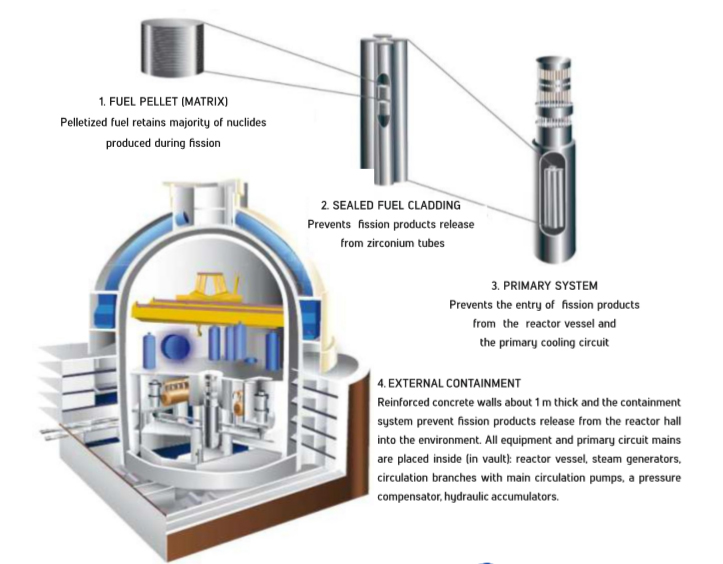
If something happens in the reactor hall, all the radioactivity will remain inside the shell. Containment stands the internal pressure of 5 kg/cm2 and an external impact from the shock wave, creating pressure of 30 kPa, and the incident plane. That is, assuming that all the water supplied into the reactor turns into steam and, like in a giant kettle, will press on the cover from within, the cover will withstand this tremendous pressure also. Thus, the dome of the power unit is as if in constant readiness to stand in the breach from within. For this purpose, the cover is made of "prestressed concrete": metal wires, strung inside the concrete cover, make the structure stronger, increasing its stability. The volume of the containment is quite high – 75.000 cubic meters; the risk accumulation of hydrogen therein in explosive concentrations is considerably smaller than on NPP "Fukushima-1". In case of a crash, to reduce the vapor pressure inside the containment, a "sprinkler system" is mounted, which sprays a solution of boron and other substances from under the dome unit that prevent the expansion of radioactivity. At the same place hydrogen recombiners are installed, which do not allow this gas to accumulate and exclude the possibility of an explosion.
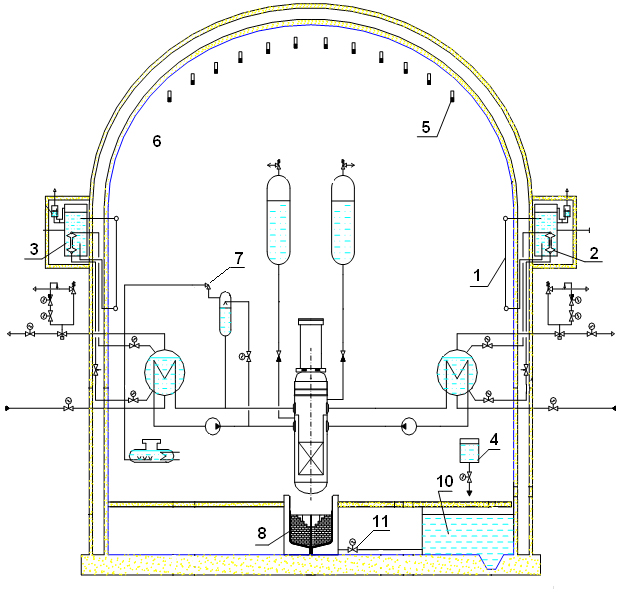
1, 2 – passive heat removal system;
3 – emergency water tanks;
4 – emergency chemical feed system;
5 – hydrogen recombiners;
6 - hydrogen concentration monitoring sensors;
7 – safety valves;
8 – core catcher;
9 – water supply system;
10 – borated water storage tanks of JNK system;
11 – fittings on the core catcher communication line and JNK tanks.
About us
In accordance with the Decree of the President of the Republic of Belarus dated November 12, 2007 No. 565 “On Some Measures for the Construction of a Nuclear Power Plant”, in December 2007 the state institution “Directorate for the Construction of the Nuclear Power Plant” was created.
By the Decree of the President of the Republic of Belarus dated December 30, 2013 No. 583 “On the Reorganization of the State Institution “Directorate for the Construction of the Nuclear Power Plant”, the institution was reorganized into the Republican Unitary Enterprise “Belarusian Nuclear Power Plant” (State Enterprise “Belarusian NPP”).
The enterprise carries out the functions of the customer for the construction and the operator (operating organization) for commissioning, operation, limiting operational characteristics, extending the life of the plant and decommissioning of Belarusian NPP.
Working hours
Monday-Thursday: 8.00 – 12.30, 13.00 – 16.42
8.30 – 13.00, 13.30 – 17.12
Friday: 8.00 – 12.30, 13.00 – 15.42
8.30 – 13.00, 13.30 – 16.12
Saturday, Sunday: days off.
Director General
Sergey Bobovich, phone: +375 (1591) 46-699
“Direct telephone lines” are made by the management of the State Enterprise "Belarusian NPP" on the last Friday of the month from 15.00 to 16.42 by phone. +375 (1591) 4-53-50 in order to explain issues to citizens and legal entities within their competence or on a pre-planned topic due to its relevance.
Hot Lines are made from Monday to Thursday from 14.00 to 16.42, Friday from 14.00 to 15.42 by phone. +375 (1591) 46-699 in order to inform citizens and legal entities of information on issues requiring the institution to take response measures within its competence.
A book of comments and suggestions is located in office 15R016. Responsible for recording the book: department of control and paperwork.
Schedule of personal reception of citizens, their representatives, representatives of legal entities
|
Name of the official |
Position |
Time |
Place |
|
|
1 |
Sergey Bobovich |
General Director |
the first Wednesday in a month from 8.00 to 13.00 |
NPP site construction Administration building office 205 |
|
2 |
Anatoly Bondar |
Chief Engineer of the Nuclear Power Plant |
the second Wednesday in a month from 8.00 tо 13.00 |
NPP site construction Administration building office 205 |
|
3 |
Alexander Starinsky |
Deputy General Director - Head of Capital Construction Department |
the third Wednesday in a month from 8.00 tо 13.00 |
NPP site construction Administration building office 203 |
|
4 |
Vladimir Gretsky |
Deputy Director General for Security, Regime and Personnel |
the forth Wednesday in a month from 8.00 tо 13.00 |
NPP site construction Administration building office 205 |
|
5 |
Valery Senut |
Deputy Director General for General Affairs |
the first Friday in a month from 8.00 tо 13.00 |
NPP site construction Administration building office 209 |
|
6 |
Alexey Ris |
Deputy Director General |
the second Monday in a month from 8.00 tо 13.00 |
NPP site construction Administration building office 205 |
Overhead organization
State Production Association of Electric Power "Belenergo"
Address: 17 Shornaya str., 220030, Minsk.
Working hours: Working days: from 8.30 tо 17.30
Days off: Saturday, Sunday.
Belarusian NPP: News today
Belarusian NPP: Eco management
The web-site operates error-checking system. If you find a mistake, highlight it and press Ctrl + Enter.
